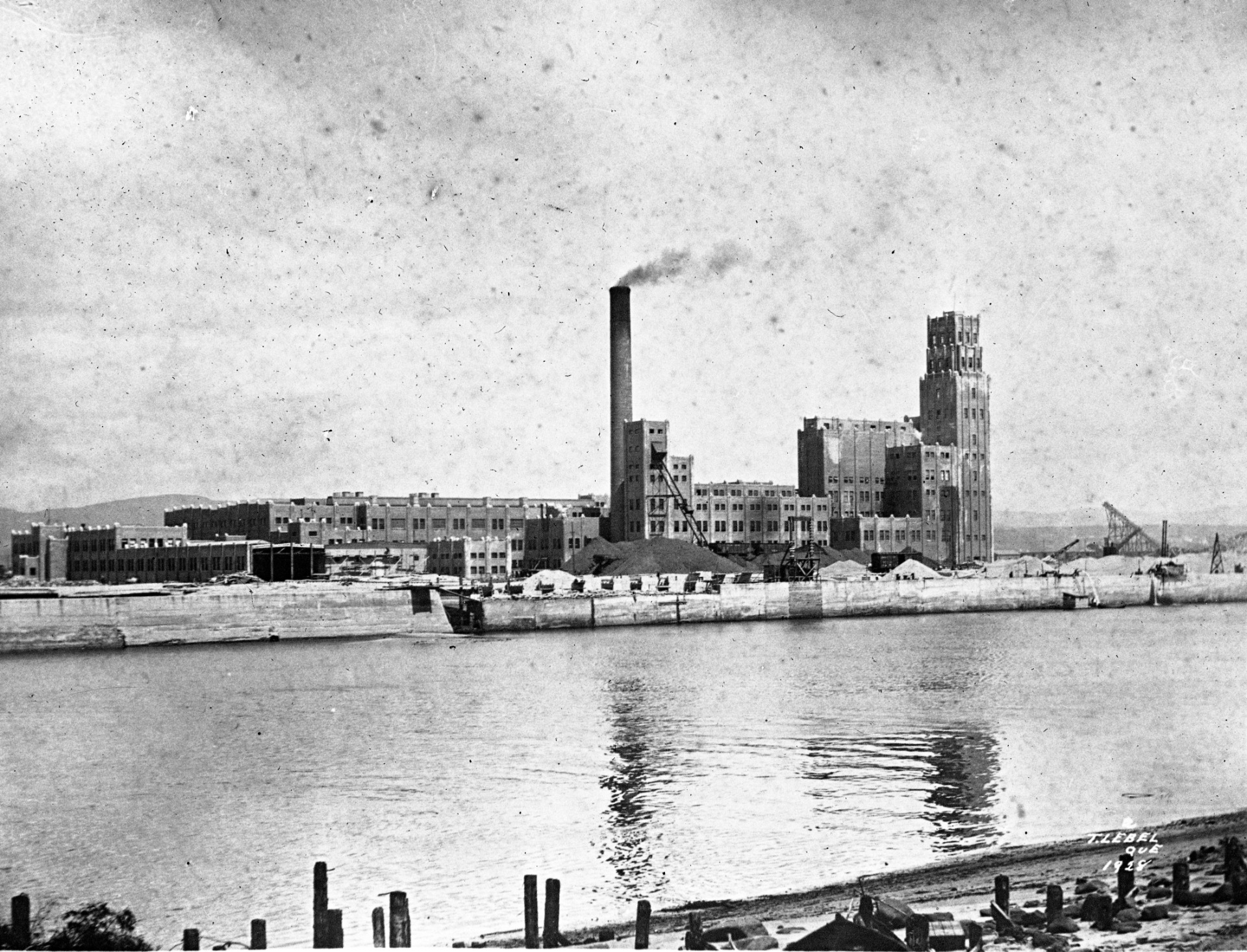
 0
0An Industrial Past That’s Still Here Today

Audio guide:
Find here the images that accompany the audio guide:
You can best appreciate just how close Québec City is to nature from the north side of the Observatory. We’re standing on the edge of the majestic Laurentians (1), an ancient mountain range that stretches for hundreds of miles, crossing the province of Quebec from east to west.

In addition to the mountains, the northern section of the city also features the Saint-Charles River (2). This waterway, which runs for some 6.2 miles through Québec City, has played an important role in the region’s history. The Innu call it Kabir Kouba, meaning “river of a thousand twists and turns,” while the Huron-Wendats call it Akiawenhrahk, meaning “trout river.”
The industrial history of Québec City played out on the banks of the Saint-Charles. In the 19th century, the boom in the timber trade transformed the city into a hub of maritime activity. Ingoing and outgoing timber shipments set the pace in the port (3). There were also several shipyards, tanneries and factories.

But time takes its toll. The timber trade dried up in the middle of the 19th century, forcing the industry to reinvent itself. Fortunately, it found a way to meet the challenge. With the arrival of the train on the north shore of the Saint Lawrence in 1879, the Port of Québec City became a key location for exporting the region’s natural resources. Grain silos (4) were built in the port in the 1920s. Those operated by Bunge are still standing and are clearly visible from where you are.
Imagine Québec City at that time. More than 225 factories and workshops were in operation, mainly in Lower Town. Some 10,000 workers contributed to manufacturing a wide array of internationally renowned products. Shoes in particular were the pride of Québec City, pieced together by over 4,000 employees.
And that’s not all. Corsets, furniture, tobacco and even ammunition were also produced in the city!
Some vestiges of this industrial past can still be seen today. On the north shore of the Saint-Charles River, west of the port, Stadacona Mill (5) towers over more recent facilities. Its tall red brick silhouette has dominated the view since 1927.

The La Fabrique Building, formerly the factory of Dominion Corset (6), features two towers, one of which is topped by a clock.

A little farther away, the Rothmans Benson & Hedges plant (7), formerly Rock City Tobacco, stands out with its water tower bearing the Craven A brand logo.

The districts of Saint-Roch (9) and Saint-Jean (10) quickly filled up with artisans, immigrants and workers alongside new factories and workshops. Living conditions were difficult and residents suffered through several epidemics.
In 1845, two devastating fires reduced these neighbourhoods to ashes. A total of 3,000 homes were destroyed, leaving over 20,000 people homeless. As the population moved westward, the Saint-Sauveur District (11) was born.

In the 1870s, Saint-Joseph Street became the main commercial thoroughfare in the Saint-Roch District, thanks to the arrival of the tramway. Department stores like Z. Paquet and J.B. Laliberté opened their doors for business there, attracting many loyal customers.

This commercial golden age lasted until the first shopping malls drew customers to the suburbs in the 1960s.
But the history of Québec City’s northern section doesn’t end there. There’s more to this region than its industrial past.
To learn more, see the additional information at the bottom of the page.
